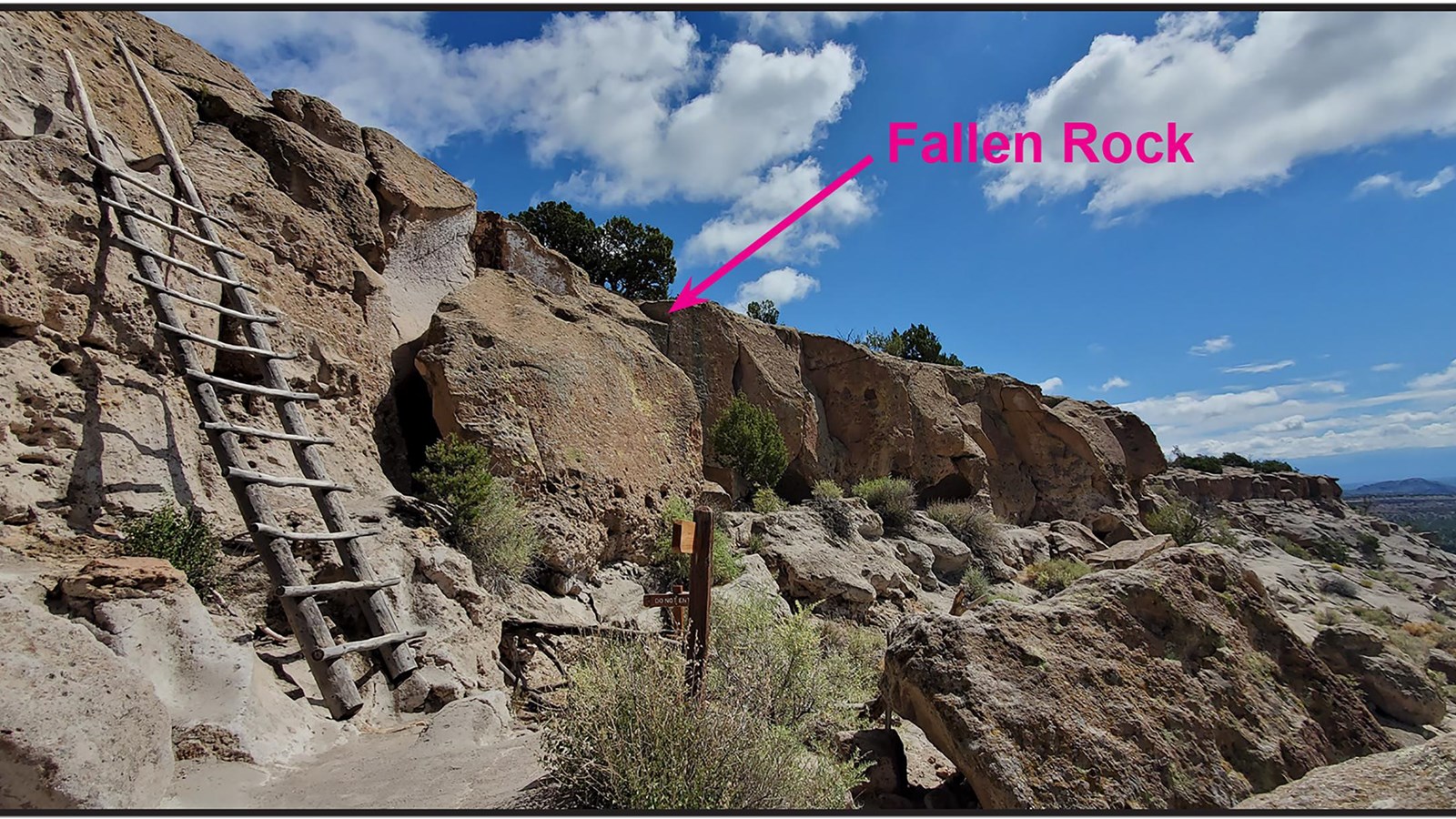Last updated: April 28, 2025
Place
Fallen Rock Tsankawi Guided Hike Stop 15

NPS
Quick Facts
Amenities
2 listed
Historical/Interpretive Information/Exhibits, Scenic View/Photo Spot
Just down the trail, you will find two cavates (human-excavated caves) that you may enter. All of Tsankawi is located on volcanic tuff, a soft rock formed when ash was erupted from the Jemez Volcano (remember, we saw part of it earlier looking to the west) over a million years ago. Natural forces of wind and water erode the surface of the tuff, carving out cavities where the rock is most vulnerable. People, with harder volcanic rock tools, enlarged the natural holes into hollow spaces for living and storing food.
Just to the right of the ladder you just came down, there is a large rock leaning against the cliff. Look closely and you will see where it separated from the cliff behind it. In the fissure between rock and cliff, you can see many plant roots. What do you think happened here? Erosion is an on-going force, attacking the cliff, trails, and archeological sites every moment of every day. Not only rain and wind but also freeze-thaw events and the growth of roots can split one fragment of rock from another. Sometimes, as in this rock fall from 2018, archeological sites are affected. The fallen rock blocks a cavate. Imagine if this collapse had occurred a few feet to the left, obstructing the trail.
Just to the right of the ladder you just came down, there is a large rock leaning against the cliff. Look closely and you will see where it separated from the cliff behind it. In the fissure between rock and cliff, you can see many plant roots. What do you think happened here? Erosion is an on-going force, attacking the cliff, trails, and archeological sites every moment of every day. Not only rain and wind but also freeze-thaw events and the growth of roots can split one fragment of rock from another. Sometimes, as in this rock fall from 2018, archeological sites are affected. The fallen rock blocks a cavate. Imagine if this collapse had occurred a few feet to the left, obstructing the trail.
